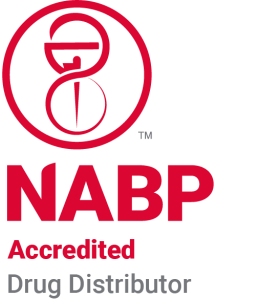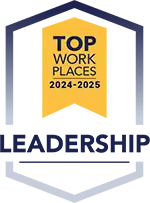When the Chains Close, You’re the One They Call
By Nick Secrest, VP of Member Performance, IPC
Published: June 19, 2025

It usually starts with a rumor.
A patient mentions their Walgreens is cutting hours. A delivery driver says the CVS staff looks skeleton-thin. Then one day, the lights are off. The doors are locked. A sign taped to the window reads “This location is permanently closed.”
And just like that, hundreds of patients are looking for a pharmacy. Will you be top of mind for patients looking for a new pharmacy?
For independent pharmacy owners, the closure of a nearby chain can feel like both a gift and a gut punch. The volume is there, but so is the pressure. The opportunity is real, but only if you’re ready to handle it.
Let me walk you through what that looks like. Not in theory. In practice.
Meet Taylor, Pharmacy Owner in the Midwest
When the CVS across the street closed last fall, Taylor saw what many pharmacy owners dream of, an open lane for growth.
Within two weeks, Taylor’s store had taken on 270 new patients. By week three, her team was behind on refills, struggling with staffing gaps, and staring at a drug bill that was double their usual.
The new business was there. But so were the consequences of taking it on without a plan.
This blog is about building that plan, before the next chain in your area shutters its doors.
Step 1:
Slow Down and Size It Up
Before you rush to absorb new patients, ask yourself the hard questions:
- Do I want this volume?
- Are these patients and scripts profitable?
- Can my team absorb this without crumbling?
- Do I have enough product on the shelves and money in the bank to keep up?
Just because patients are available doesn’t mean you have to take every one of them. Be selective. Focus on where you can offer great care and maintain your margins.
Run a quick volume impact assessment. If you gained 200 new patients in one month, what would that do to your current refill load, staffing model, and inventory strategy?
Step 2:
Know Your Capital Limits Before They Get Tested
Growth takes cash. You’ll be buying more inventory, filling more expensive meds, and possibly hiring staff before a single reimbursement hits your bank.
Taylor didn’t realize how tight the timing would be. Her wholesaler expected payment in fifteen ten days. Her PBMs? About 17 days or longer for some. That gap nearly wiped out her savings.
You don’t want to be in that position.
Secure a line of credit now. Even if you never use it. You want that cushion available before you’re in a bind, not after.
Step 3:
Get Strategic with Your Inventory
When a chain closes, patient needs shift fast. You might suddenly need to stock specialty meds, new brands, or higher quantities than you’re used to.
That means rethinking what you order, where you source from, and how long you can float your drug bill.
This is where IPC’s warehouse comes in. With flexible pay terms and smart sourcing strategies, we help members avoid front-loading their finances or overstocking low-margin drugs.
Contact IPC to audit your top 30 high-cost items. We’ll help you identify what to shift to our warehouse for better pricing and terms.
Step 4:
Start Recruiting Yesterday
Taylor had two full-time techs when the CVS closed. That wasn’t enough. She scrambled to post jobs, train a new hire, and beg her team to cover extra shifts. Morale tanked.
If you know a closure is coming, get ahead of staffing needs now. Start talking to chain employees in your area. Many are already looking for new opportunities.
Even if you’re not ready to hire, building that talent pipeline gives you a head start.
Make a list of go-to candidates you’d call if your volume jumped by 25 percent. Reach out, build the relationship, and be ready to move.
Step 5:
Build Provider Relationships Before You Need Them
In a chain closure scenario, transferring scripts can get messy. You’ll likely have to request new prescriptions from providers directly.
If those clinics don’t know you, that delay could frustrate new patients and slow your workflow.
A warm introduction today can save hours of back-and-forth when the pressure is on.
Introduce yourself to at least two local clinics or physician groups in your area. Share your fax number, highlight your service model, and offer support for the upcoming transition.
Step 6:
Protect Your Time, Energy, and Business Health
Saying yes to new business should never mean saying goodbye to your own boundaries. Burnout sneaks in when your store is growing, but your processes haven’t caught up.
Before the floodgates open, build systems that protect your staff’s time and your mental health.
This includes:
- Delegating refill calls
- Setting patient expectations clearly
- Automating inventory where possible
- Saying no when something isn’t right for your model
Revisit your daily workflow. What breaks when your volume increases? Fix those gaps now while you still have breathing room.
Step 7:
Know the Payer Mix Before You Say Yes
Not all patients are profitable. Some chains have contracts that don’t align with what independents have access to. You could inherit dozens of prescriptions with reimbursement rates that don’t even cover your costs.
Before you open the floodgates, understand what you’re absorbing. This is a business, not a charity.
Run a payer mix analysis with IPC. We’ll help you understand which patients are worth pursuing and which may need alternative strategies like cash pay models.
Step 8:
Make Noise (So They Know You’re Here)
The chain closed. That doesn’t mean everyone automatically finds you. Patients need to know where to go and why you’re different.
This is not the time to stay quiet. This is the time to show up.
Post on social. Put up signage. Talk to local providers and community groups. Market like your future depends on it, because it does.
IPC offers member-exclusive vendor discounts and marketing content you can use to build awareness fast without breaking your budget.
Visit IPC’s Marketing My Pharmacy series and pull three ready-to-use templates to promote your services locally.
The Bottom Line:
This Could Be Your Taylor Moment
Taylor figured it out, but not without stress. She had the patients, but not the systems. She had the opportunity, but not the preparation.
Looking back, she didn’t regret saying yes to the growth. She regretted not having a plan when it came.
Your moment might be coming soon. Maybe it is already here. A chain closing down the road could turn into your biggest month of the year or your hardest.
The difference will be what you do right now.
Start having the conversations. Look at your inventory, your people, and your numbers. Build the muscle before the wave hits. And if you want a hand getting there, we are ready when you are.
Let’s make sure you do not just survive the shift. You grow from it.







